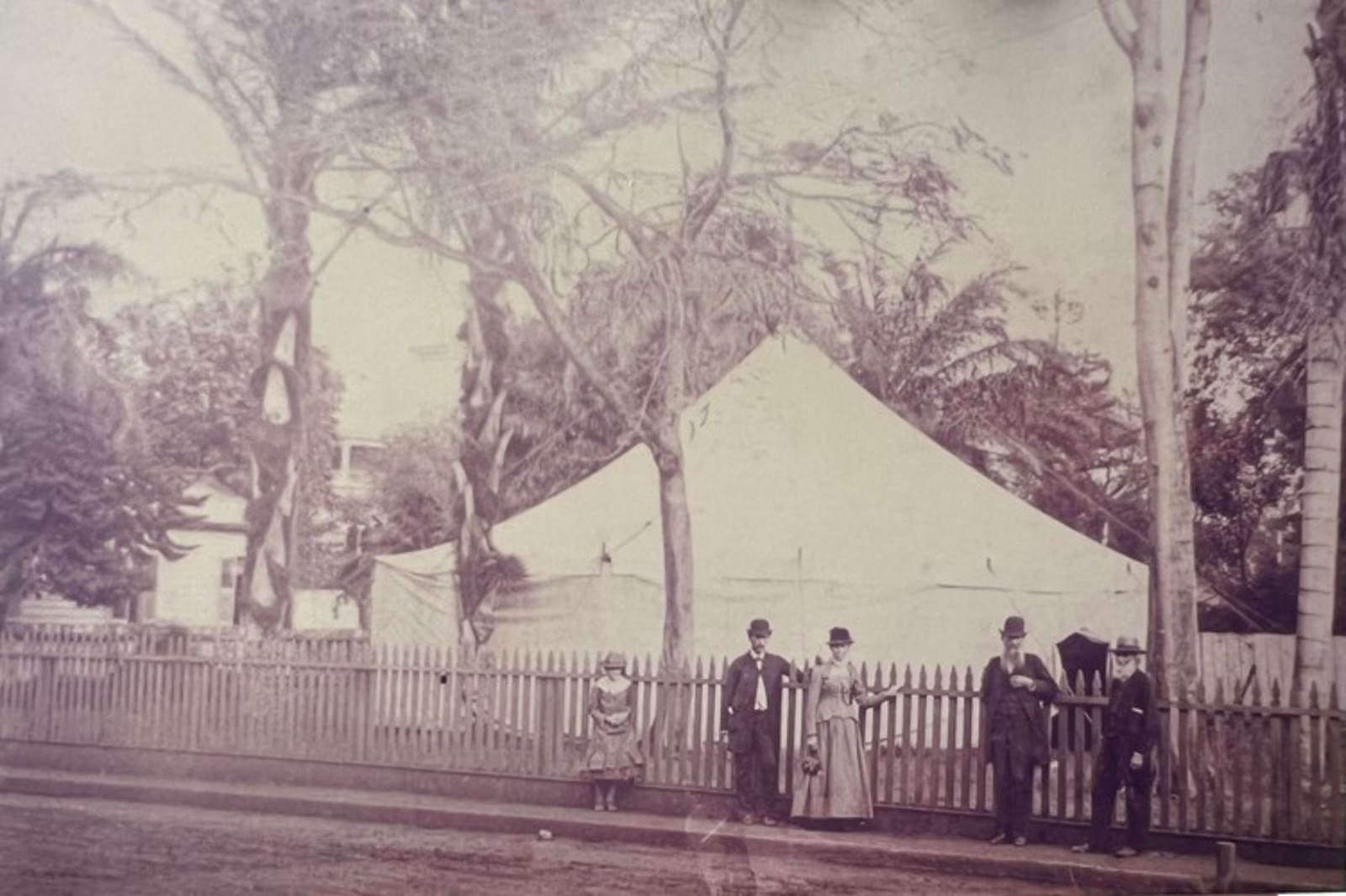
Photograph of the first evangelistic meeting held in Hawaii from January through March 1886. From Left to right: Birdie Healey, William Healey, Clara Healey, Loran A. Scott, and Abram La Rue. Photo courtesy of the Hawaii Conference; shared by Michael W. Campbell
The stories we tell matter. Whether it is my parents showing me a picture of a cabin my grandfather built in British Columbia, Canada, with an admonition to be industrious and to work hard to earn an education, to more recently, when I took my own children to the site of the World Trade Center in New York, where my father barely escaped with his life on September 11, 2001, such stories pertain to our identity.
Perhaps my favorite stories in our Adventist past pertain to how Adventism spread to new places. While the traditional narrative focuses on M. B. Czechowski, who was sponsored by another denomination, to J. N. Andrews and his children, Mary and Charles, who left as the denomination’s first official overseas missionaries, these stories remind us about incredible sacrifice and commitment.
Yet in telling those stories, we should not overlook how Adventism spread across what is today the North American Division. There are powerful examples of how our early Adventist pioneers risked their lives to spread their convictions. The intrepid Merritt G. Kellogg first traveled by covered wagon across the country in 1859. In 1861 he gave a series of Bible lectures that led to the conversion of 14 people. He returned east in 1867, to study at Troll’s Hygieo-Therapeutic College. Yet it was those early believers who sent $133 in gold to church leaders, asking them to please send a missionary. In response the 1868 General Conference Session sent J. N. Loughborough and Daniel T. Bourdeau as the denomination’s first “missionaries” to the far-off land of California. The next year a state organization with about 75 members was organized, with Bourdeau as the mission president. While California might not seem like a foreign mission field, when most of the denomination was based in New England, in many ways it could be argued that it was the church’s first missionary endeavor.
Such missionary work inspires further missions. As the denomination developed an increasingly worldwide mission, as Adventist mission took a foothold in Europe, it would be in the wake of the California Conference that the Adventist message would expand westward across the Pacific. The earliest Adventist overseas mission to move westward was in the Sandwich Islands, or what was then the Kingdom of Hawaii. At a “special meeting” held April 18-28, 1884, in Oakland, California, church leaders reported that members from California would sponsor “two laborers” who “will commence work” that May. On August 13, 1884, Loron Allen Scott and Abram La Rue left on the ship W. H. Dimond for Honolulu. This date deserves to be recognized as just as important as when Andrews left a decade earlier as one of the most significant dates in Adventist mission history. Upon their arrival they established “a free reading-room and [book] depository” at 189 Nuuanu Avenue. They held temperance lectures at the nearby YMCA, and soon a small group of believers was established. They hoped, with the many Chinese immigrants, that this island would help them learn how to do missionary work in China — a dream that La Rue would later fulfill by going as the denomination’s first self-supporting missionary to Asia based in Hong Kong. The believers in Honolulu would form a nucleus hosting the first group of Adventist missionaries who traveled to Australia and who stopped by briefly on May 18, 1885. During their brief stayover, they met the missionaries, gave them some tropical fruit and a brief tour, and although still only barely established, with 13 converts, they sent these missionaries headed “down under” off with an offering to help support them.
What is amazing is that Adventist missions inspire missions. It’s contagious. And we need to tell these many varied stories about how Adventism spread, including to such “foreign” places as California and Hawaii.
— Michael W. Campbell is director of North American Division Archives, Statistics & Research.
